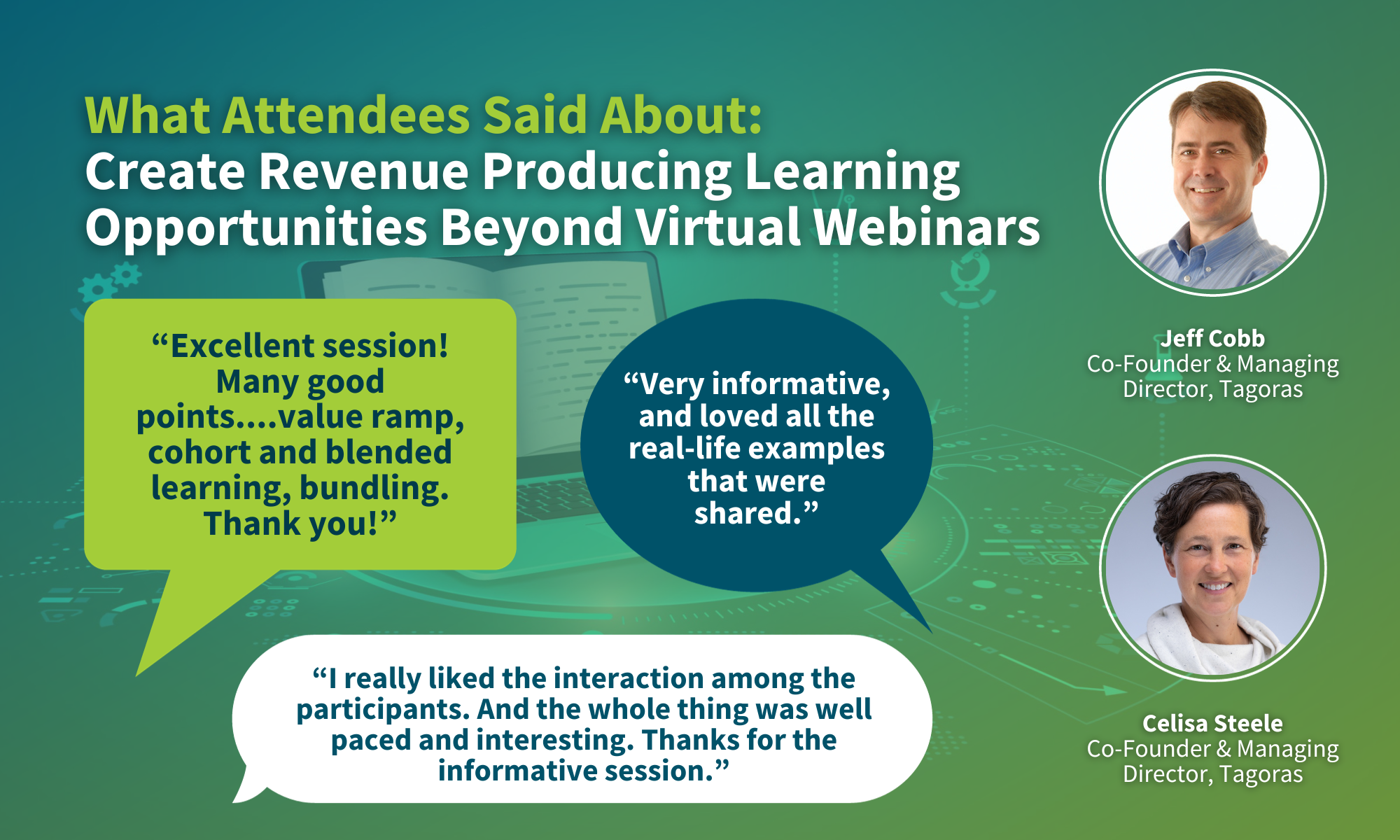Boost Engagement and Non-Dues Revenue with Cohort Learning

The evolution of online learning has transformed the educational landscape, expanding opportunities for both associations and learners. Associations can reach a broader and more diverse audience and learners have greater flexibility in where and when they learn.
But this increased accessibility also introduces new challenges for associations’ non-dues revenue portfolios.
As more industry providers offer free webinars and educational content, association learners have a multitude of choices for their professional development. As a result, associations must find new ways to keep their non-dues revenue streams viable and relevant.
Learning cohorts could be the answer according to Celisa Steele and Jeff Cobb, Co-Founders of Tagoras learning consultancy.
“Cohort-based learning involves a group of people learning together and it's usually for a set period of time,” Steele says. “Members of the group can support each other and provide accountability.”
That support and accountability is vital to material retention and course completion - studies show that cohort learners experience as high as a 90% course completion rate.
Cohort learning can take on various forms, but Steele says one effective method involves developing a series of webinars focused on a specific topic. These webinars are made available to a limited number of participants who attend each session together. In addition to learning material, learners form a supportive social network with one another.
“There's extra value from the experience of learning with others and getting to share your experience and questions and hearing what others have to say,” Steele says.
The American Animal Hospital Association (AAHA) is one association that is experiencing success with cohort learning. The association is responsible for accrediting companion animal veterinary hospitals – a one-on-one process for 90 years. It began offering accreditation in a cohort-based learning format last year by turning AAHA’s Standards into a curriculum. According to AAHA’s Chief Value Officer Keith Chamberlain, these cohorts are full of participants through March 2024.
“We’re finding it’s creating communities in a virtual environment,” Chamberlain says. “It’s helping to build networks across a very diverse veterinarian community.”
When considering pricing for cohort learning or any educational product, Cobb says associations must ensure the value reflects the financial investment of the learner.
“There should be a fundamental relationship between price and value when it comes to really selling just about any product or service,” Cobb says.
Cohort learning stands out as a solution to not only generate non-dues revenue but also deliver value and a sense of community to association members.
